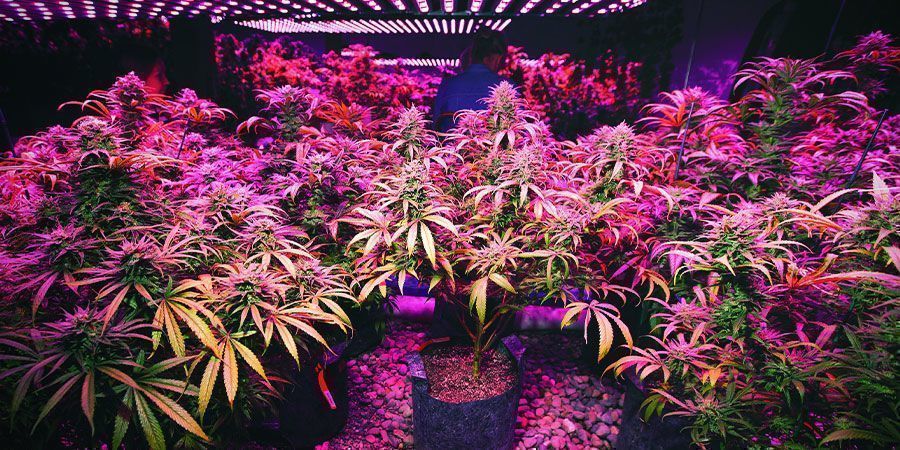
The Optimal Distance Between Grow Lights And Cannabis Plants
Hanging a grow light in your grow room or tent is just one part of the story. To really get the most out of your cannabis plants, you need to hang your light at the optimal height to support robust health and production. Read on for some advice and recommendations!
Providing your plants with an optimal amount of light is crucial when growing cannabis. If your plants don’t get enough light, or too much, poor yields and sick specimens are just around the corner.
For this reason, you need to hang your grow light at the optimal distance from your cannabis plants. But getting this right isn’t always straightforward. The best distance depends on a number of factors, including the type and make of your light, and the age of your cannabis plants. In this article, you will find out how to determine the optimal distance from your cannabis to hang your grow light.
What Are the Signs of Light Stress?
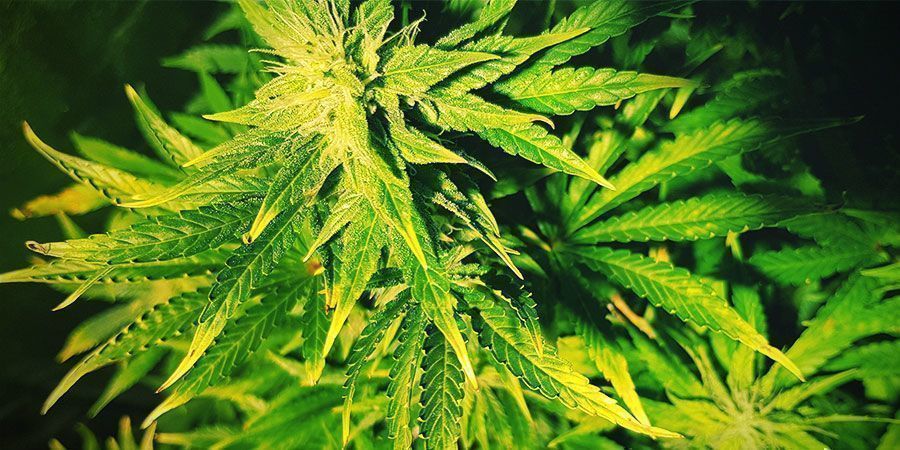
A few centimetres too close can be all that it takes for your grow light to inflict stress on your plants. The heat and intensity of the light can cause significant damage if left to persist. Known as heat stress and light burn, these stressors can cause the following symptoms to occur:
- Leaves drying at the edges, curling, and cupping upwards
- Yellow leaves or leaf tips that get progressively worse from the top up
- Leaves become crispy and break off
- Leaves lose their green colour and appear bleached
- Buds appear “burnt”
If you spot any of these symptoms, especially if they appear on the leaves closest to the light source, it’s time to adjust your lighting.
Why Does Grow Light Distance Matter?
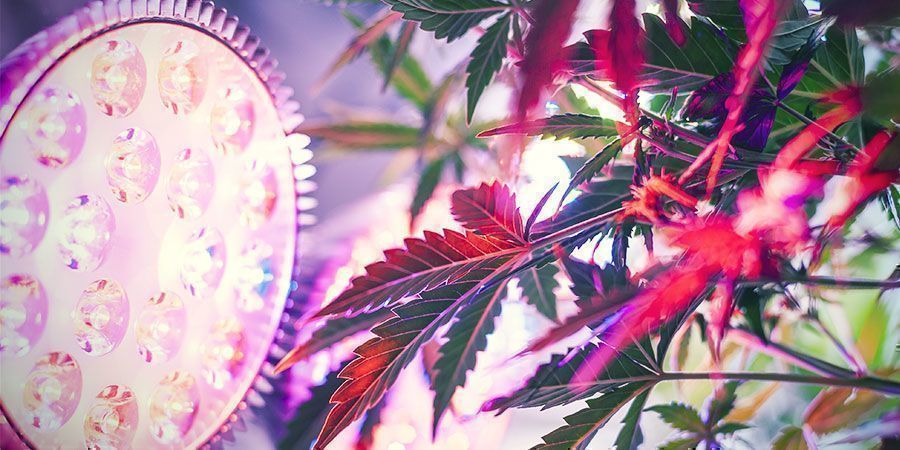
“The intensity of light is inversely proportional to the square of the distance”. What does that mean? It means that a small change in distance between your lights and your plants can make a big difference in light intensity.
If you grow weed, you will already know that your plants require a lot of light. It’s as simple as more light equals more productive plants equals bigger yields. But hang your lights too close to your plants, and this can cause problems.
The key here is to find the perfect distance that supports optimal yields, but not to the detriment of plant health. You don’t want to be constantly stressing or burning your plants. Matters are complicated by the fact that there is no general recommendation for the best (and safest) grow light distance. The reason for this is that not all grow lights are equal.
With some types of grow lights, for example CFLs, a safe distance isn’t too much a concern. You can bring your grow light as close to your plants as you can. Other lights, such as HID grow lights, give off a large amount of heat, making it paramount that there’s sufficient distance between the canopy and the grow light. And then there are LED grow lights, which emit significant amounts of light, but they don’t run too hot.
In addition, the optimal distance depends on how powerful your light is, and where your plant is at in its growing cycle. Ultimately, though, no matter the type of grow light you are using, you’ll want to hang it at the optimal distance from your weed.
Recommended Grow Light Distance by Type
Let’s take a look at the most common grow lights available, along with their recommended distance from your plants. However, keep in mind that we can only give rough guidelines. It is recommended that you check with the manufacturer of your specific make and model. This is the best way to find the perfect distance, rather than just making assumptions.
HID Lights
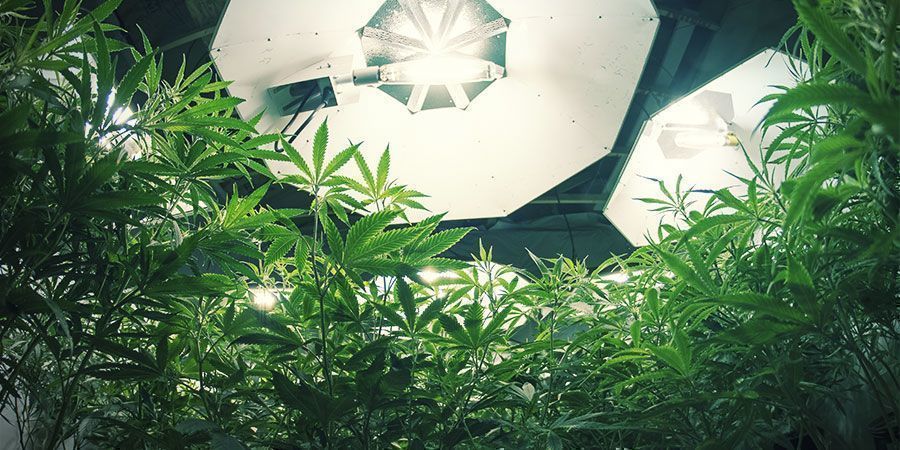
HID (high-intensity discharge) grow lights include MH (metal halide) lights for vegetative growth and HPS (high-pressure sodium) lights for flowering. These lights are still the gold standard for growing cannabis, with 400W and 600W HID fixtures being the most common. They are affordable, and give off large amounts of light, ensuring great yields. Downside: HID grow lights emit a lot of heat, which warrants a large growing space and a safe distance from your plants.
![]() Seedling
Seedling
- 400W HID (MH): At least 48cm
- 600W HID (MH): At least 64cm
![]() Veg/Flowering
Veg/Flowering
- 400W HID: 35–48cm veg (MH); 30–35cm flower (HPS)
- 600W HID: 41–64cm veg (MH); 35–41cm flower (HPS)
LED Lights
LED grow lights are increasingly becoming a standard in grow rooms everywhere. Their advantage is that they use little power compared to HID/LEC lights, plus they run a lot cooler. A modern LED grow light can output a significant amount of light, so you’ll want to hang it at a safe distance to avoid bleaching. It’s important to know that there are big differences among LED grow lights when it comes to their power and light output, not to mention overall quality. If you're running an LED grow, make sure you see the manufacturer’s recommendations. The LED grow light distance guidelines below are broken down into more inexpensive "purple" LED grow lights, and more high-end COB LED grow light solutions.
![]() Seedling
Seedling
- 3W or 5W LED bulbs (purple light): At least 70cm
- High-end LED (COB lights, etc.): At least 100cm
![]() Veg/flowering
Veg/flowering
- 3W or 5W LED bulbs (purple light): 45cm+ veg; move 5–8cm closer for flower
- High-end LED (COB lights, etc.): 60cm+ veg; move 5–8cm closer for flower
LEC Lights
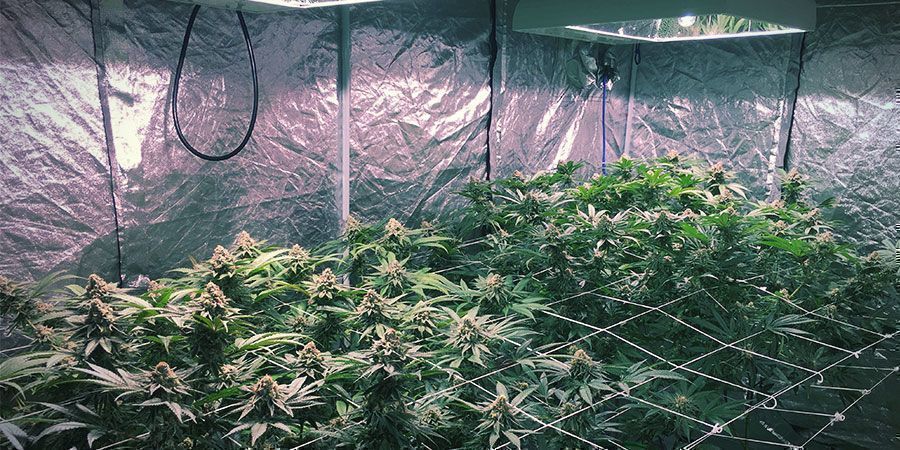
LEC (light-emitting ceramic) grow lights, also called ceramic metal halide (CMH) or ceramic discharge metal halide (CDM) grow lights, are a newer type of HID. They use a ceramic tube—rather than quartz—and give off a natural light spectrum. An LEC grow light lasts about twice as long as an HID bulb. LECs emit a substantial amount of light, so you’ll want to hang them at a safe distance. LEC/CMH grow lights come almost exclusively in 315W and 630W, with the 315W variant being the most popular.
![]() Seedling
Seedling
- 315W LEC (CMH): 120–150cm
- 630W LEC (CMH): 150+cm
![]() Veg/Flowering
Veg/Flowering
- 315W LEC (CMH): 51+cm veg; 45cm+ flower
- 630W LEC (CMH): 66+cm veg; 60cm+ flower
CFL / T5 Lights
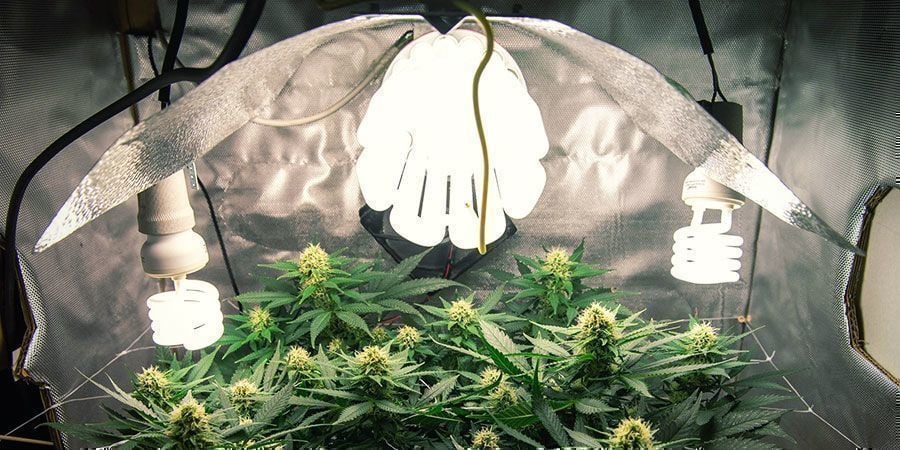
CFLs (compact fluorescent lights) are common and widely available. These are the energy-saving fluorescent light bulbs that came on the market before LEDs. They are cheap and fit in standard sockets. CFL grow lights don’t emit much light, which makes them less suitable for flowering. But, they make great seedling and vegging lights. Also, they use little energy and will barely get warm. T5 is a fluorescent grow light like CFL, but features fluorescent tubes in a fixture, rather than standard shaped bulbs.
You can’t really “burn” your plants with a CFL grow light, so you will actually want to hang them as close to your weed as possible.
![]() Seedling
Seedling
- CFL / T5: Approx. 5cm
![]() Veg/Flowering
Veg/Flowering
- CFL / T5: Keep as close as possible, 1–2cm
Should You Keep Adjusting the Hanging Height of Your Grow Lights?
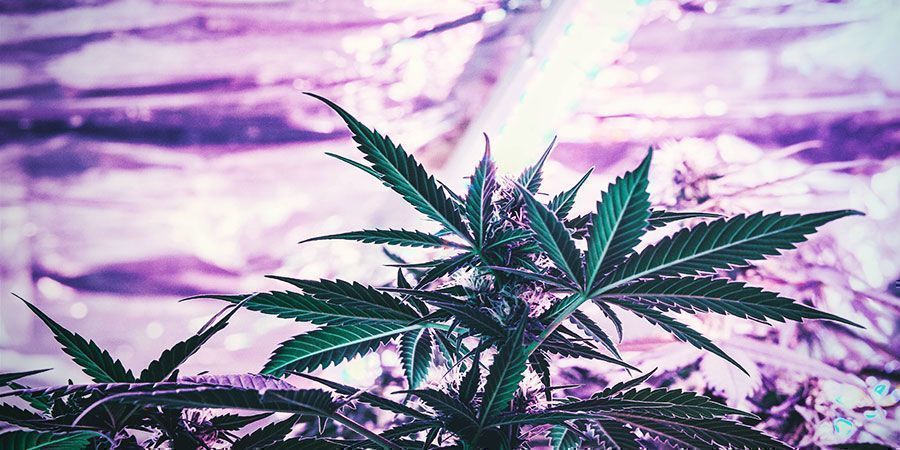
Yes! No matter what type of grow light you have in your grow room, you should be using an easily adjustable grow light hanger or chain to change the distance depending on the stage of growth, the height of your plants, and how they are responding to lighting in general.
When plants are growing vigorously, it’s well possible that your lights need adjusting every day or two. This is important if you want to support healthy growth at every stage.
Tips for Calculating the Best Grow Light Distance
Aside from consulting with the manufacturer of your grow light to find the optimal hanging distance, there are other ways you can determine this figure. Here are some of them:
Use a Lux Meter or PAR Meter
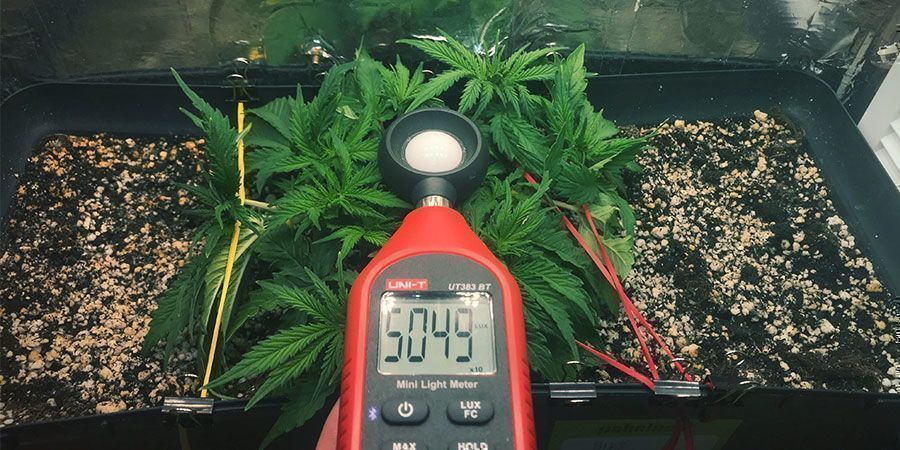
Lux (or lumens) is a measurement of light intensity. But know that lux isn’t a very good way to measure light as it pertains to plants. This is because lux measures light intensity as humans see it, and not so much how it is used by plants.
For an exact measurement of light used by plants, one would need a PAR (photosynthetically active radiation) meter. These, however, are quite expensive, but they give you the most accurate reading.
But a lux meter, which can be had for little money, can still give a rough idea about the light intensity in your grow room. Do note, though, that a lux meter isn’t suitable when you’re using LEDs that give off purple light. Here are the recommended lux levels for each major stage of growth.
- Veg: 15,000 lux (min.) to 40,000 lux (max)
- Flowering: 35,000 lux (min.) to 60,000 lux (max)
Constantly Look for Signs of Light Stress
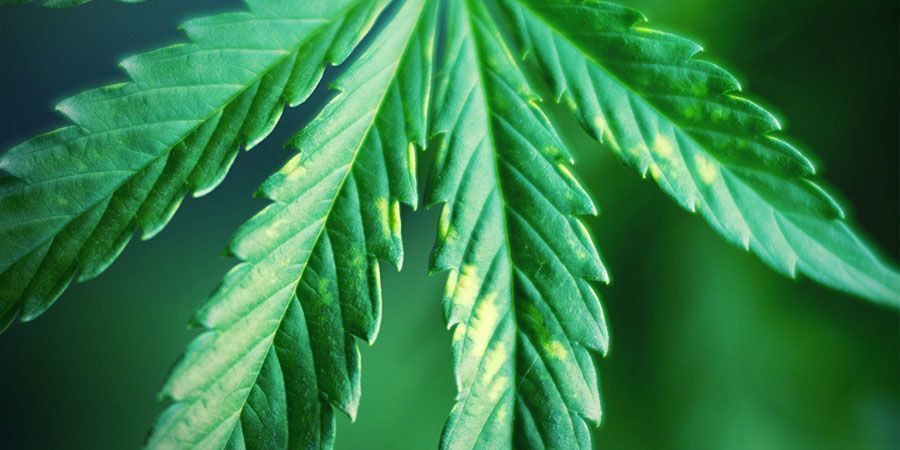
No doubt, general observance is a valid way to determine the best distance between your weed and your lights. Any bleached, curled, yellow, dry, or crumbly leaves—particularly those closest to the light—can indicate light and/or heat stress. If you spot any of these signs, hang your lights further away from your plants and see if things improve.
Do the “Hand Test”

Another way to easily check if your plants are receiving too much light is the ever-popular hand test. This one is quite simple and straightforward: Hold your hand underneath your light at the level of your plant’s canopy. If you can comfortably keep your hands there for about 30 seconds without them getting hot, it should also be safe for your plants. Of course, you will still want to keep an eye on your ladies as this method isn’t always accurate, but it can help prevent major stress or burning.
Check Your Equipment
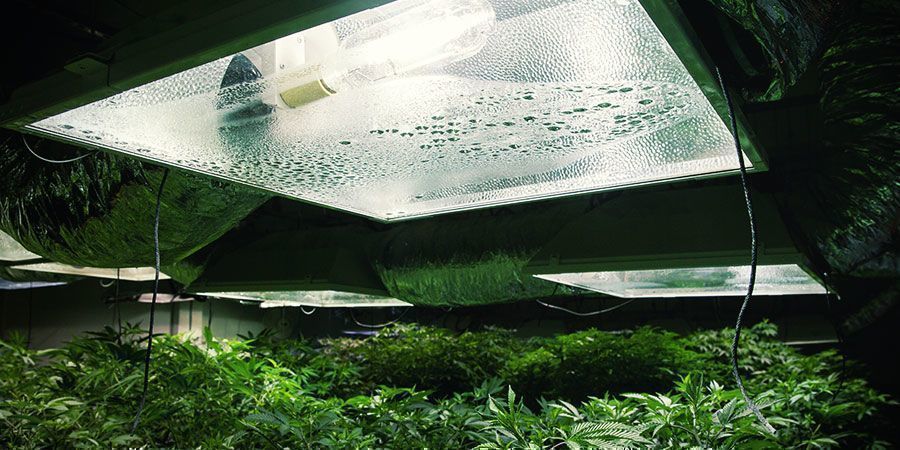
Grow lights tend to become less intense with age. HID bulbs, for example, have a lifespan of about one year, and LEC lights have about twice that.
Since their performance degrades, it's important to keep your lights in good condition, especially if you’re calculating intensity based on manufacturer figures. Don’t forget that these recommendations will be for new lights at peak performance. So make sure you replace your HID (MH and HPS) bulbs frequently—at least once a year. Only then can you take full advantage of your light’s intensity.
Optimal Distance Between Your Grow Light and Your Cannabis Plants: Be Vigilant!
Especially if you’re still new to growing cannabis, don’t let the many types of grow lights available or technical terms intimidate you. You can find forums with passionate growers who will be happy to give you advice based on their experiences. This is, without a doubt, the best way to get help with anything related to your grow, from setting up the ideal distance between your lights and plants, to any other growing questions you may have.
- (n.d.). Factors limiting photosynthesis - Photosynthesis – WJEC - GCSE Biology (Single Science) Revision - WJEC - BBC Bitesize - https://www.bbc.co.uk
-
 6 min
January 17, 2022
Using LED Grow Lights To Maximise Cannabis Yields
Choice; a wonderful freedom or a terrible burden? Choosing how to set up your cannabis grow requires a lot of decisions, not least of all when it comes to lighting. Find out all about LED lights,...
6 min
January 17, 2022
Using LED Grow Lights To Maximise Cannabis Yields
Choice; a wonderful freedom or a terrible burden? Choosing how to set up your cannabis grow requires a lot of decisions, not least of all when it comes to lighting. Find out all about LED lights,...
-
 7 min
January 10, 2022
Cannabis Grow Lights: LED Vs HPS
HPS grow lights have long been the standard among indoor cannabis growers. LEDs, on the other hand, are the new kid on the block, generating a lot of hype, and not always in a good way. In this...
7 min
January 10, 2022
Cannabis Grow Lights: LED Vs HPS
HPS grow lights have long been the standard among indoor cannabis growers. LEDs, on the other hand, are the new kid on the block, generating a lot of hype, and not always in a good way. In this...
-
 5 min
September 14, 2021
How To Boost THC With UV Light
Growing cannabis can be good fun, and growers are always looking for that next thing to push their weed to the next level. Well, UV-B light might just be it. Used correctly, you can make your weed...
5 min
September 14, 2021
How To Boost THC With UV Light
Growing cannabis can be good fun, and growers are always looking for that next thing to push their weed to the next level. Well, UV-B light might just be it. Used correctly, you can make your weed...
-
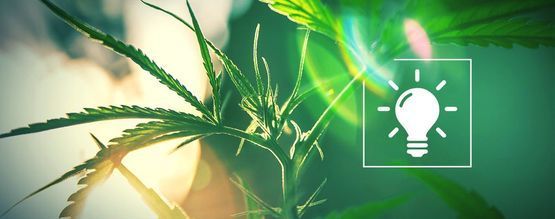 7 min
June 13, 2019
Choosing The Right Light For Your Grow-Op
Cannabis plants have many demands, but none quite as important as lighting. A good set of lights are needed to ensure plants can photosynthesise properly and make enough energy to survive and...
7 min
June 13, 2019
Choosing The Right Light For Your Grow-Op
Cannabis plants have many demands, but none quite as important as lighting. A good set of lights are needed to ensure plants can photosynthesise properly and make enough energy to survive and...











 United States
United States

